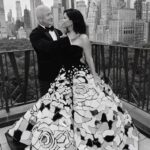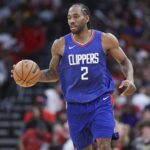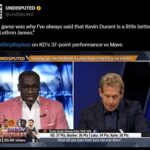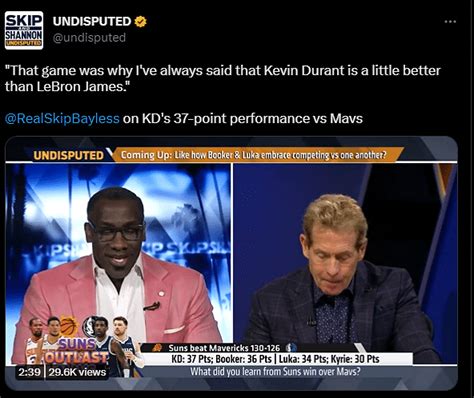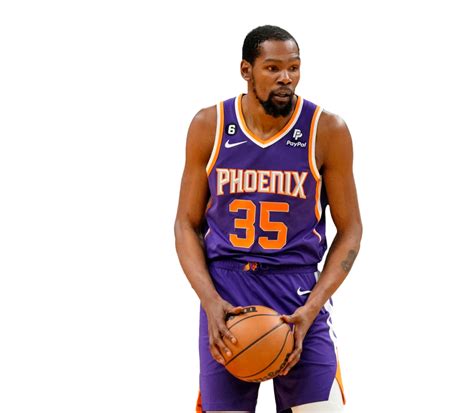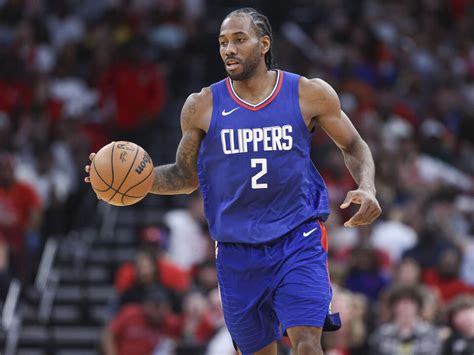
Kawhi Leonard is making headlines, but this time it’s not for his on-court prowess. The Los Angeles Clippers star debuted a new hairstyle – cornrow braids – sparking a flurry of reactions across social media and the NBA community.
Kawhi Leonard, known for his reserved demeanor and understated style, surprised fans with his updated look, trading his signature low fade for neatly braided cornrows. The change was first prominently displayed during a recent Clippers practice, quickly making its way across various online platforms. The reaction has been mixed, ranging from praise for the fresh style to lighthearted amusement and comparisons to other notable figures known for wearing braids. This unexpected shift in appearance has transformed the usually laser-focused attention on Leonard’s performance and injury status to a discussion on personal style and the impact of athlete image in the digital age. This sudden buzz surrounding his hairstyle underscores the intersection of sports, celebrity culture, and social media trends.
From Fade to Braids: Leonard’s Style Evolution
Kawhi Leonard’s public image has always been characterized by a certain degree of calculated minimalism. While many NBA stars embrace flamboyant fashion choices and regularly experiment with their looks, Leonard has typically maintained a low profile, both on and off the court. This makes his recent hairstyle change all the more noteworthy. For years, he sported a simple, clean-cut fade, a practical and unassuming style that mirrored his on-court persona: efficient, effective, and free of unnecessary flair. This consistent image contributed to his reputation as a player who prioritized substance over style, letting his performance speak for itself.
However, the introduction of cornrow braids represents a significant departure from this established norm. While seemingly a minor alteration, it signals a willingness to experiment and perhaps even embrace a more expressive side of his personality. This shift is particularly interesting given Leonard’s history of carefully controlling his public image. The decision to adopt braids, a style rich in cultural significance and often associated with individuality and self-expression, suggests a potential evolution in Leonard’s personal branding.
The immediate and widespread reaction to Leonard’s new look highlights the powerful influence of visual communication in today’s digital landscape. In an era where athletes are increasingly viewed as brands, every aspect of their appearance, from clothing choices to hairstyles, is subject to intense scrutiny and analysis. Leonard’s braids have become a focal point, sparking conversations about personal style, cultural appropriation (though most commentators are focusing on the aesthetic change), and the role of athletes as trendsetters.
The specific design of Leonard’s braids also warrants attention. The cornrows are neatly and precisely executed, suggesting a deliberate and carefully considered choice. Unlike more elaborate braided styles that incorporate intricate patterns or vibrant colors, Leonard’s braids are relatively simple and understated, maintaining a degree of consistency with his overall minimalist aesthetic. This suggests that while he is willing to experiment with his appearance, he remains committed to a certain level of restraint and practicality.
Social Media Buzz: Reactions and Memes
The internet, predictably, has exploded with reactions to Kawhi Leonard’s new hairstyle. Social media platforms like Twitter, Instagram, and TikTok have been flooded with posts, memes, and comments dissecting and reacting to the change. The tone of these reactions has been varied, ranging from genuine appreciation and admiration to playful ribbing and humorous comparisons.
Many fans have expressed positive sentiments, praising Leonard for his bold choice and suggesting that the braids add a new dimension to his look. Some have commented on the freshness and modernity of the style, noting that it aligns with current trends in men’s fashion. Others have lauded Leonard for his willingness to step outside of his comfort zone and experiment with his personal image.
However, the internet is also known for its penchant for humor and playful mockery, and Leonard’s braids have been no exception. Numerous memes have emerged, comparing his new hairstyle to those of other notable figures known for wearing braids, from rappers and athletes to characters from popular culture. Some of these comparisons have been lighthearted and amusing, while others have been more pointed and satirical.
The speed and scale of the social media reaction underscore the power of these platforms to amplify and disseminate information, as well as to shape public opinion. Within minutes of images of Leonard’s braids surfacing online, the topic became a trending subject, dominating conversations across various digital channels. This demonstrates the extent to which athletes’ appearances are subject to public scrutiny and the degree to which social media serves as a forum for instant commentary and reaction.
The social media buzz surrounding Leonard’s hairstyle also reflects the increasing importance of personal branding in the world of professional sports. In an era where athletes are viewed as multifaceted brands, their image and appearance play a crucial role in shaping their public perception and attracting endorsement deals. Leonard’s decision to change his hairstyle, while seemingly a minor alteration, has generated significant attention and has the potential to impact his brand image in both positive and negative ways.
Impact on Leonard’s Brand and Endorsements
The ripple effect of Kawhi Leonard’s hairstyle change extends beyond mere aesthetics, potentially influencing his brand image and endorsement opportunities. In the modern sports landscape, athletes are not just players; they are brands, and their marketability hinges on a complex interplay of performance, personality, and appearance. Leonard’s typically understated image has been a key element of his brand, projecting an aura of focus, dedication, and unwavering commitment to the game. The introduction of braids introduces a new variable into this equation, with uncertain consequences.
On one hand, the new hairstyle could enhance Leonard’s appeal to a broader audience. Braids are a popular and culturally significant hairstyle, particularly among younger demographics and communities of color. By embracing this style, Leonard could potentially connect with these groups on a deeper level, expanding his fanbase and increasing his marketability. This could lead to new endorsement opportunities with brands that target these demographics, as well as collaborations with fashion and lifestyle companies.
Furthermore, the hairstyle change could be interpreted as a sign of Leonard’s evolving personality. By stepping outside of his comfort zone and experimenting with his appearance, he could be signaling a willingness to embrace new experiences and express himself more openly. This could make him a more relatable and engaging figure, attracting fans who appreciate authenticity and individuality.
However, there are also potential downsides to consider. Leonard’s previous image of quiet competence and unwavering focus has been a key selling point for many of his endorsements. Some brands may be hesitant to associate with an athlete who is perceived as being too trendy or unconventional, fearing that it could dilute their message or alienate their target audience.
Moreover, the social media reaction to Leonard’s hairstyle has been mixed, with some fans expressing amusement or even criticism. While a certain amount of controversy can be beneficial for generating buzz and attracting attention, too much negativity could damage Leonard’s reputation and make him a less attractive endorsement partner.
Ultimately, the impact of Leonard’s hairstyle change on his brand and endorsements will depend on how he leverages it moving forward. If he is able to integrate the new style seamlessly into his existing brand, maintaining his focus on performance and his commitment to the game, he could potentially reap significant rewards. However, if the hairstyle change is perceived as being inconsistent with his overall image, or if it leads to negative publicity, it could have a detrimental effect on his marketability.
Historical Context of Braids in Basketball
Kawhi Leonard’s decision to sport braids fits into a broader historical context of hairstyles in basketball, particularly the significance of braids within the sport. Throughout the history of the NBA, hairstyles have served as a powerful form of self-expression and cultural identity for players, reflecting broader social trends and challenging conventional norms.
In the early days of the NBA, hairstyles were generally conservative and understated, reflecting the prevailing societal norms of the time. However, as the league became more diverse and players began to embrace their individuality, hairstyles became more expressive and varied.
The rise of braids as a prominent hairstyle in basketball can be traced back to the 1980s and 1990s, when players like Allen Iverson, Latrell Sprewell, and Dennis Rodman began to experiment with different braided styles. These players used their hairstyles to express their cultural heritage, challenge racial stereotypes, and assert their individuality.
Allen Iverson, in particular, played a pivotal role in popularizing braids among basketball players. His signature cornrows became synonymous with his rebellious image and his unapologetic embrace of his cultural identity. Iverson’s hairstyle was often criticized by conservative commentators who viewed it as unprofessional or even threatening. However, it was also embraced by many fans who saw it as a symbol of authenticity and self-expression.
Latrell Sprewell’s braids also generated significant controversy in the late 1990s, when he was suspended by the Golden State Warriors for choking his coach. Sprewell’s braided hairstyle became a symbol of his defiance and his refusal to conform to societal expectations.
Dennis Rodman was another influential figure in the history of hairstyles in basketball. Known for his flamboyant personality and his willingness to push boundaries, Rodman experimented with a wide range of hairstyles, including brightly colored braids, elaborate patterns, and even shaved designs. Rodman’s hairstyles were often seen as provocative and attention-grabbing, but they also reflected his unique sense of style and his refusal to be confined by conventional norms.
In recent years, braids have become increasingly common among basketball players, reflecting the growing acceptance of diverse hairstyles and the increasing emphasis on self-expression. Players like LeBron James, Kevin Durant, and Russell Westbrook have all sported braids at various points in their careers, demonstrating the widespread appeal of this hairstyle.
Kawhi Leonard’s decision to wear braids can be seen as part of this ongoing tradition of self-expression and cultural identity in basketball. By embracing this hairstyle, Leonard is not only making a fashion statement, but he is also aligning himself with a rich history of players who have used their hairstyles to challenge conventions and express their individuality.
Clippers’ Perspective: Focus Remains on Performance
While the buzz surrounding Kawhi Leonard’s braids has dominated social media and sports news, within the Los Angeles Clippers organization, the focus remains squarely on his performance and health. According to sources close to the team, the hairstyle change has been met with little fanfare internally, with coaches and teammates prioritizing Leonard’s contributions on the court over his personal appearance.
Clippers head coach Tyronn Lue has reportedly made no specific comments about Leonard’s braids, instead emphasizing the importance of Leonard’s continued progress in his return from injury. Lue has consistently stated that the team’s primary goal is to ensure that Leonard is fully healthy and prepared for the upcoming season, and that his personal appearance is a non-issue.
Similarly, Leonard’s teammates have largely refrained from commenting on his hairstyle change, focusing instead on his leadership and his impact on the team’s performance. Several players have noted that Leonard’s presence on the court elevates the level of play for everyone, and that his health and availability are the most important factors for the team’s success.
This focus on performance over personal appearance reflects the Clippers’ overall organizational culture, which emphasizes professionalism, discipline, and a commitment to excellence. The team has invested heavily in Leonard, both financially and strategically, and their primary objective is to maximize his contributions on the court.
The Clippers’ approach to Leonard’s hairstyle change also reflects a broader trend in professional sports, where teams are increasingly tolerant of players’ individual expression, as long as it does not interfere with their performance or their ability to represent the organization in a positive light. While there may have been a time when teams would have discouraged players from adopting unconventional hairstyles or fashion choices, the modern NBA is generally more accepting of individuality and self-expression.
However, it is also important to note that the Clippers are likely aware of the potential impact of Leonard’s hairstyle change on his brand and his marketability. While the team’s primary focus is on his performance, they also understand that his image plays a role in his overall value and his ability to attract endorsements and other opportunities. As such, the team is likely monitoring the social media reaction to Leonard’s braids and assessing its potential impact on his brand.
Ultimately, the Clippers’ perspective on Leonard’s hairstyle change is one of pragmatic acceptance. The team recognizes that Leonard is an individual with his own personal style and preferences, and they are willing to accommodate his choices as long as they do not detract from his performance or his ability to contribute to the team’s success.
Future Predictions: Will the Braids Stay?
The question on many fans’ minds is: will Kawhi Leonard keep the braids? Predicting future hairstyle choices is inherently speculative, but several factors could influence Leonard’s decision. His personal comfort and satisfaction with the style will undoubtedly play a significant role. If he finds the braids to be manageable and aesthetically pleasing, he may be inclined to stick with them.
The social media reaction, while not the sole determining factor, could also have an impact. If the feedback is overwhelmingly positive, Leonard may feel encouraged to continue sporting the braids. However, if the reaction is largely negative, he may be more likely to revert to his previous hairstyle.
The Clippers’ organization may also have some influence, albeit indirectly. While the team is unlikely to explicitly dictate Leonard’s hairstyle choices, they may offer subtle suggestions or guidance, particularly if they believe that his appearance is impacting his brand or his ability to represent the team in a positive light.
Ultimately, the decision of whether to keep the braids rests solely with Kawhi Leonard. He has a history of making unconventional choices and defying expectations, so it is difficult to predict what he will do. However, based on his personality and his past behavior, it is likely that he will make a decision that is both comfortable and authentic for him.
One possibility is that Leonard will keep the braids for a limited time, perhaps for a few weeks or months, and then switch to a different style. This would allow him to experiment with his appearance without committing to a long-term change.
Another possibility is that Leonard will keep the braids for the entire season, embracing the style as a new part of his identity. This would signal a more significant shift in his personal branding and could potentially open up new opportunities for him.
Regardless of what he decides, it is clear that Kawhi Leonard’s hairstyle has generated significant buzz and has sparked a conversation about personal style, cultural identity, and the role of athletes as trendsetters. It will be interesting to see how his hairstyle evolves in the future and how it continues to impact his image and his brand.
Comparison to Other NBA Hairstyle Controversies
Kawhi Leonard’s hairstyle change, while generating buzz, is far from the first time NBA players’ hairstyles have caused a stir. Throughout the league’s history, hairstyles have been a flashpoint for cultural expression, rebellion, and sometimes, controversy.
One of the most notable examples is Allen Iverson’s cornrows, which, as mentioned previously, became a symbol of his identity and a source of contention. Some viewed them as unprofessional, while others saw them as a representation of his authentic self.
Dennis Rodman’s ever-changing and often outrageous hairstyles were another source of controversy. From bright colors to elaborate designs, Rodman used his hair to express his unique personality and challenge societal norms.
More recently, players like Iman Shumpert have drawn attention for their unique hairstyles, pushing the boundaries of what is considered acceptable in the NBA. These examples highlight the ongoing tension between tradition and individuality in the league, and the ways in which players use their appearance to make a statement.
Compared to some of these past controversies, Kawhi Leonard’s braids are relatively tame. However, the fact that they have generated so much attention underscores the continued importance of hairstyles as a form of self-expression and cultural identity in the NBA. It also speaks to Leonard’s carefully cultivated image as someone who is typically understated and reserved, making any deviation from that norm all the more noteworthy.
In many ways, the reaction to Leonard’s braids is a microcosm of the broader cultural conversation about hairstyles and identity. What may seem like a simple hairstyle choice can often carry deeper meaning and significance, reflecting cultural values, personal beliefs, and societal expectations.
Conclusion: A Hairstyle Reflecting Changing Times
Kawhi Leonard’s decision to sport braids is more than just a change in hairstyle; it’s a reflection of the evolving landscape of professional sports, where athletes are increasingly embracing individuality and self-expression. While his on-court performance remains the primary focus, the buzz surrounding his new look underscores the powerful intersection of sports, celebrity culture, and social media. Whether the braids are a temporary experiment or a permanent fixture, they’ve undeniably sparked a conversation about personal style, cultural identity, and the ever-evolving image of the modern NBA player. The hairstyle highlights the evolving role of athletes as cultural figures who not only excel in their respective sports but also shape trends and influence public discourse. Leonard’s braids are another example of how athletes are increasingly using their platforms to express themselves and connect with fans on a deeper level. This trend is likely to continue in the future, as athletes become more empowered to control their own brands and to use their voices to advocate for social change.
Frequently Asked Questions (FAQ)
1. Why did Kawhi Leonard decide to get braids now?
The exact reason for Kawhi Leonard’s decision is unknown, as he hasn’t publicly commented on it. However, it’s likely a combination of personal preference, a desire for a new look, and perhaps an intention to embrace a more expressive style. It could also be influenced by current hairstyle trends.
2. How have fans reacted to Kawhi Leonard’s new hairstyle?
Fan reactions have been mixed, ranging from positive appreciation and admiration to lighthearted amusement and comparisons to other celebrities known for wearing braids. Social media has been flooded with memes and comments, showcasing the diverse opinions on his new look.
3. Will this hairstyle change affect Kawhi Leonard’s endorsement deals?
It’s difficult to predict definitively. While it could broaden his appeal to certain demographics, some brands might prefer his previous, more understated image. The impact will depend on how he integrates the style into his overall brand and whether it generates positive or negative publicity.
4. Is Kawhi Leonard’s hairstyle culturally significant?
Braids have a rich cultural history, particularly within the Black community. While it’s unclear if Leonard’s choice is a deliberate statement, it aligns with a broader trend of athletes using hairstyles to express their identity and heritage.
5. What do the Clippers organization think about Kawhi Leonard’s braids?
The Clippers organization is reportedly focused on Leonard’s performance and health, rather than his hairstyle. Coach Tyronn Lue and teammates have emphasized the importance of his on-court contributions, suggesting that his personal appearance is a non-issue for the team.
